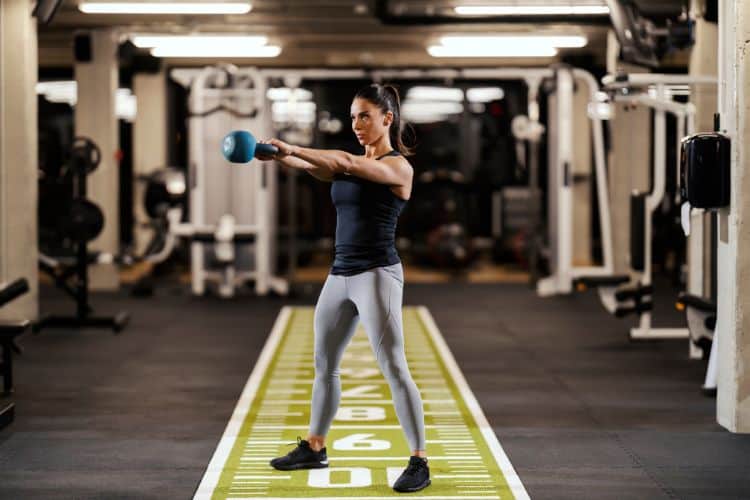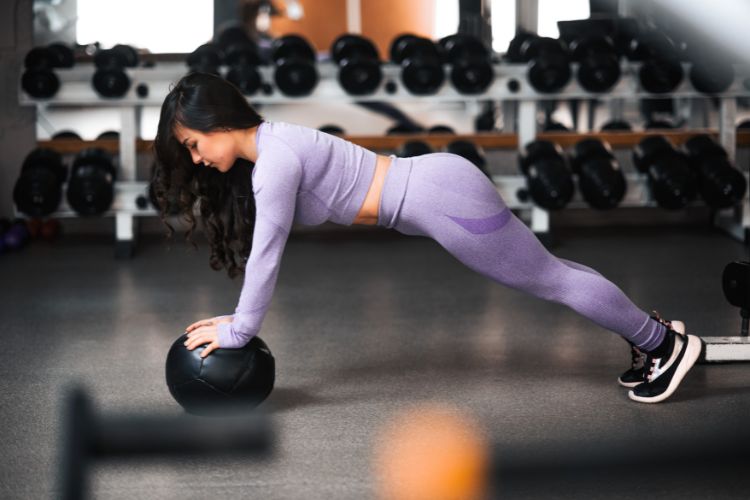Sign up for workout ideas, training advice, reviews of the latest gear and more.






Medicine ball push-ups are a dynamic and powerful bodyweight exercise that can dramatically increase upper body strength, improve core stability, and elevate your functional fitness. By incorporating a medicine ball into your push-up routine, you not only challenge your muscles differently but also enhance coordination, balance, and explosiveness.
Whether you’re a beginner looking to intensify your workouts or an advanced athlete aiming to break through plateaus, MBPU offer versatile variations for every fitness level. This guide dives deep into the benefits, technique, variations, and sample workouts for a complete MBPU routine.
Medicine ball push-ups are a variation of the traditional push-up that involves placing one or both hands on a medicine ball. The added instability of the ball forces your muscles—especially your core, chest, and shoulders—to work harder to maintain control and alignment. It also creates a deeper range of motion, enhancing muscle activation.
This compound exercise not only targets the upper body but also trains balance and coordination, making it a favorite among functional fitness enthusiasts and athletes.
Medicine ball push-ups target the chest, triceps, and shoulders more intensely than regular push-ups due to the unstable surface. The increased range of motion adds resistance, stimulating greater muscle fiber recruitment.
Balancing on the medicine ball activates your abdominal muscles, obliques, and lower back. Over time, this improves your core strength and overall balance, which benefits both athletic performance and daily movement.
Because medicine ball push-ups mimic real-life movements and challenge stability, they are excellent for functional fitness. Athletes, fighters, and even those in rehabilitation settings can benefit from these compound movements.
You can modify medicine ball push-ups in several ways to match your fitness level—from basic one-hand variations to explosive plyometric push-ups. This makes them adaptable and scalable.
By isolating one arm at a time or alternating sides, you improve muscular balance and correct any imbalances between your left and right sides.
MBPU are primarily an upper-body and core workout. The main muscles worked include:
Secondary stabilizers include muscles in the hips and lower body, especially during more dynamic variations.
Here’s a step-by-step guide to performing a standard MBPU safely:
Push-up with one hand on the ball, then roll the ball to the other hand and repeat. Great for core and shoulder stability.
Place both hands on the ball and perform a push-up. This variation increases the range of motion and is excellent for building triceps and chest power.
Explode off the ball at the top of each push-up and catch yourself back in position. Ideal for building power and explosiveness.
Perform push-ups with both hands on the ball and elbows close to the body to target the triceps more directly.
Keep one hand elevated on the ball and one on the ground. Great for unilateral strength and muscle imbalances.
Place your feet on a raised platform and hands in a push-up position, one on the ball. This adds intensity and emphasizes the upper chest.
Repeat for 3 rounds.
Repeat for 4 rounds.
Repeat for 5 rounds.
Don’t jump into advanced variations if you’re new. Begin with foundational movements and work your way up as your strength and coordination improve.
Maintain proper posture and form to avoid injury. Quality reps beat quantity every time.
Medicine balls can move during workouts, so ensure you have a grippy surface to prevent slipping.
Pair medicine ball push-ups with other exercises like squats, lunges, or planks for a full-body circuit.
Add MBPU to your workouts 2–3 times a week for optimal strength and stability gains.
This reduces core activation and puts pressure on the lower back.
Leaning too much on the ball side can cause strain or imbalance.
Going too fast leads to sloppy form and reduced effectiveness.
Using a heavy or oversized medicine ball before mastering the basics can increase injury risk.
Recommended brands include TRX, SPRI, Rogue Fitness, and Amazon Basics for home-friendly medicine balls.
Medicine ball push-ups are suitable for:
If you’re a complete beginner, start with knee push-ups or incline push-ups before advancing to medicine ball exercises.
While MBPU are excellent for upper body training, they don’t offer the same maximal strength gains as heavy bench pressing. However, they are an ideal complement to weightlifting for enhancing stability, muscular endurance, and explosive strength.
MBPU are a powerful, adaptable, and functional strength-training move that can transform your upper body workouts. They offer increased muscle activation, core strengthening benefits, and improved joint stability—all with minimal equipment.
Whether you’re working out at home or in a gym, these push-up variations add an exciting challenge to any routine. Begin with basic forms, build your strength, and soon you’ll be mastering the more advanced variations with confidence.
Yes, as long as it’s stable and doesn’t roll excessively. Avoid balls that are too soft or heavy.
2–3 times per week is ideal for noticeable strength and core gains.
Yes! The unstable surface recruits deep core muscles, making it an excellent ab-focused upper body exercise.
Stay up to date on the latest women’s health, fitness and lifestyle trends and tips.